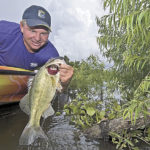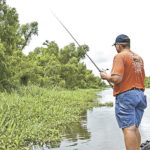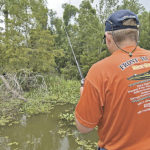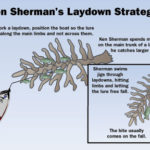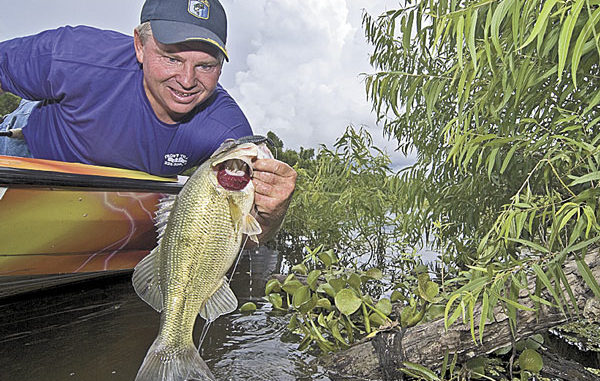
When Hurricane Gustav whacked coastal Louisiana, the storm hammered the Atchafalaya Basin, but plenty of fish survived in the waters on the extreme southern end.
I shuddered when my cell phone rang and I saw the name on the screen. Ken Sherman had told me we wouldn’t head out until 5:15 a.m., an obscenely late hour for the die-hard tournament angler.Yep, I just knew he wouldn’t be able to stand it.
So I figured Sherman had come to his senses and decided we should make the just-over-an-hour-long drive to the lower end of the Atchafalya Basin an hour early.
“Hey, the way the tide is, why don’t I just pick you up at 5:30?” he asked.
Was I dreaming? Maybe hearing things?
So it was after 7 a.m. before we dropped the first bait, after making a familiar run through the winding waters leading to the Orange Barrel Canal just north of Morgan City.
But Sherman wasn’t too confident.
“The tide’s coming in all day, so it’s going to be slow,” he said.
It didn’t take long for the first bite, however. I had flipped a craw next to a cypress tree, and felt a fish thwack the lure.
I set the hook, and was quickly swinging the first fish of the day — a fat goggleye — into the boat.
“That’s a good sign,” Sherman said, pitching his signature jig into the root system of another cypress.
We carefully worked the trees, snatching several more goggleye off the structure. The diminutive fish were even whacking the 3/8-ounce jig Sherman was using.
And then Sherman rocked the boat, and a 2-pound bass struggled vainly against the 265-pound man.
“Not a big one, but it’s a start,” he said.
And then we hit a stretch that produced several fish, even though the water was definitely pushing in.
That wasn’t a surprise to Port Allen’s Brent Bonadona, who has fished many a tournament between Duck Lake and Atchafalaya Bay.
“That’s the key to that area,” Bonadona said. “It’ll make you or break you. Once you figure it out, it’s easier to pattern fish instead of, say, the upper Basin where the water doesn’t move.”
That’s because when there’s water moving, either in or out, bass position around drains and on all the laydowns.
“You want to focus on the breaks in the current,” Bonadona said.
Sherman was pleasantly surprised that fish were biting on the incoming tide, and we ended up with about a dozen bass for the day.
Bonadona, who Sherman admitted was the man to talk to about working the tidal area, said the most important thing is that the water’s moving.
“When the tide’s pulling out, if the river is dirty, it’ll pull that dirty water into some of the ponds and lakes, and when the you have an increasing tide, it’ll actually push clean water out into the bayous,” he explained. “And then there’s areas where it’s best on a falling tide.”
Both anglers said the numerous bayous, both large and small, surrounding Morgan City hold plenty of fish in the fall.
“You want to find the natural bayous and fish the bends and drains,” Sherman said.
Some of Sherman’s prime targets include the Orange Barrel complex just southwest of Duck Lake. This series of canals provides a perfect combination of drains and wood — both laydowns and flooded cypress.
“That area holds a lot of fish,” he said. “It’s not a secret, but it still can produce big.”
Working toward the Wax, Sherman said he always checks the lily pads along the southern shoreline of American Pass near the mouth of Duck Lake Pass.
He also said bass gang up on points of trees on each of the drains and sloughs along the north shore of the lake into which Little Bayou Jesse flows, and the lily pads and trees in and around Dog Island Pass also are worth hitting.
Of course, he never misses an opportunity to pop a few bass from the trees at the mouths of Bayou Cane and Bear Bayou.
“Those are really good on a falling tide,” Sherman said.
And just before heading south of the Basin proper, Sherman makes stops at the Middle Pass points inside Flat Lake, and checks both sides of Drews Pass, which leads directly into Berwick Bay and the upper Wax.
That’s when flooded trees begin to fade and fishing transitions to laydowns and other fallen wood. However, there’s a key to recognizing where the best structure lies.
“You want to fish the steep banks,” Sherman said. “There’s usually a gradual bank and a sharp bank, but the fish will usually be on that steep bank.”
Long runs south of Morgan City really aren’t necessary to put together limits. Sherman said drains in several of the Bateman Island canals, located on the eastern side of the Atchafalaya River and north of Sweetbay Lake, fill with bass.
Big Wax Bayou, which meanders southward along the west side of the river before winding away to the west-northwest, also provides plenty of opportunities.
“You want to fish the bends and the runouts, as well as the timber and willow tops,” Sherman said.
The same tactic will produce bites along Cross Bayou, along with the minor natural waterways snaking off of it.
That leads to Little Bayou Wax and a slew of smaller bayous and waterways.
“Really, there are just a lot of different places in that area,” Sherman said. “Which one is the best? The ones that have the fish, and that depends on what the tide is doing and how the current is flowing.”
And he said it’s really impossible to depend on tried-and-true locations because, while the area inside the Basin levee remains fairly static, once you head south of Morgan City, everything changes — regularly.
“It’s a river system, so the shallow-water humps move around,” Sherman said. “You’ve got to be careful running around down there because you will get stuck.
“If you spend any time down there, you’ll eventually get to push (your boat off a sandbar).”
That means water movement and hotspots can change from year to year as sand piles up or is scoured away.
“Because you caught them in this drain last year doesn’t mean they’ll be there this year,” Sherman said, adding that hotspots will even change during a given season.
“When you find them, they’ll be there for a week at a time, but not for a long time,” Sherman said.
That means versatility and willingness to run-and-gun previously fish-barren spots are important.
Sherman said as winter approaches, bass migrate to more-calm areas.
“As the weather cools down, they start moving out of the big bayous,” he said. “Look for big ponds and lakes. They’re looking for stiller water, which will normally be a little warmer.”
Most of the lakes and ponds have become really shallow, so Sherman usually catches bass at the mouths of drains coming off those waters.
Another cool-weather favorite is the Bateman Lake Gas and Oil Field canals near the confluence of the Atchafalya River and the Intracoastal Waterway.
No matter which side of the levee he fishes, however, Sherman’s favorite lures are 3/8-ounce Slam Dunk Thumper jigs, Reaction Innovations Sweet Beavers and Zoom Baby Brush Hogs and Speed Craws.
And the best thing about this area from about Duck Lake inside the Basin proper to the top half of the Wax is there are still plenty of bass to catch — especially since Hurricane Gustav popped many of the bass farther up the Basin.
“I’ve found it’s actually better (in the Wax) than it has been in the Basin,” Bonadona said. “I think it’s the water movement: Closer to the river is better.”
And there could be some hefty sacks come out of the area this fall.
“There are plenty of 3-pounders, and you’re going to find some 5-pounders,” Sherman said.
